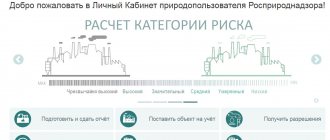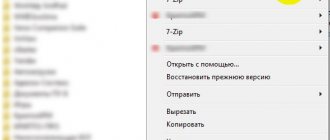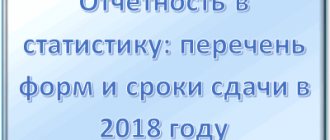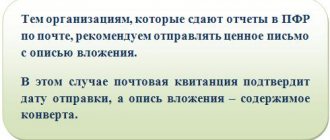The environment is now at a stage of major change. This applies to everything - the principle of supervision and control is changing to risk-oriented, supervision is now carried out not over the enterprise as a whole, but over objects of negative impact, old forms of environmental documentation are becoming a thing of the past. As a result of these innovations, the routine part of environmental reality is also being transformed. Conventional environmental reporting is increasingly changing, and in this article we propose to look at these changes in more detail.
- General information: environmental reporting 2019
- Validity period of old permits
- What will happen to 2-TP air in 2021?
- Environmental reporting: 4-OS
- DVOS in 2021
- Payment for MSW and waste management
- New reporting on PEC in 2021
General information: environmental reporting 2021
Every year, starting in 2010, after the New Year holidays, small and medium-sized businesses had to submit a report on the generation, use, disposal and disposal of waste by small and medium-sized businesses . Order of the Ministry of Natural Resources of the Russian Federation dated February 16, 2010 No. 30 establishes the procedure for submitting this reporting for SMEs operating NVOS facilities related to the federal level of environmental supervision. If the object is assigned to the regional level of supervision, reporting is submitted in accordance with the procedure for submission and control of reporting established at the local level by the authorized authority. At the end of 2021, the question arose: is it necessary to submit this report, taking into account all the changes that have occurred?
According to Art. 18 of the Federal Law of June 24, 1998 No. 89-FZ “On Production and Consumption Waste”, as amended, standards for waste generation and limits on their disposal are developed by legal entities or individual entrepreneurs carrying out economic and (or) other activities at objects of categories I and II , and are included in the comprehensive environmental permit and environmental impact statement, respectively. From 01/01/2019, legal entities and individual entrepreneurs carrying out economic and (or) other activities at category III facilities submit to the authorized executive body, in a notification procedure, reports on the generation, use, disposal, and disposal of waste. When carrying out economic and (or) other activities at objects of category IV, the development of standards and limits and the submission of reports on the generation, use, neutralization, and disposal of waste are not required.
These provisions came into full force on January 1, 2021. Before this period, Article 18 stated that small and medium-sized businesses, in the course of which economic and (or) other activities generate waste, submit reports on the generation, recycling, neutralization, and disposal of waste. Accordingly, after some doubts, the majority of SME enterprises in most regions of the Russian Federation nevertheless submitted SME reports in the form of order No. 30 or regional orders. At the same time, the reporting form that enterprises operating category III facilities must submit has not been established. Having submitted reports according to the old form as SMEs for the last time, enterprises can only wait for a new regulatory act that will approve the new reporting form. In addition, in accordance with the provisions of Federal Law No. 219-FZ, enterprises operating category III facilities will be required to submit similar reports on the impact on atmospheric air. Its form is also missing yet.
For large business enterprises, before January 1, 2021, a mandatory requirement was to ensure the development of standards for waste generation and limits for their placement as part of the PNOLR and their approval by the authorized body. The NOLR project operated for 5 years, provided that the organization annually submitted a technical report on waste management. The development of PNOLR and submission of technical reports was determined by the relevant guidelines. For facilities that have a federal level of supervision, this is Order of the Ministry of Natural Resources of Russia dated August 05, 2014 N 349; for regional facilities, these are local guidelines and procedures. In connection with changes after the abolition of PNOOLR, standards and limits for the generation and disposal of waste will be developed and received only by enterprises that have category I facilities as part of obtaining a comprehensive environmental permit.
Procedure for compiling environmental reporting
The rules for making calculations are discussed in Resolution No. 632.
The rules for drawing up the document are specified in Order No. 17, No. 319.
The form is compiled by organizations and their divisions that have stationary sources of emissions.
Consolidated waste inventories are presented by organizations, regardless of their form of ownership and type of activity. The result of submitting and entering data into the appropriate section of the Cadastre is a note that the environmental user is registered in the Waste Cadastre for a specific period.
When preparing the SME form, you should be guided by Federal Law No. 89, as well as Order No. 30.
Validity period of old permits
But at the end of 2021, federal legislation once again underwent changes introduced by Federal Law dated December 25, 2018 N 496-FZ, according to which the validity period of old permits was clarified:
Federal Law of July 21, 2014 N 219-FZ (as amended on December 25, 2018) Article 11 1. Permits for the release of pollutants into the air, limits on emissions of pollutants, permits for the discharge of pollutants into the environment, limits on discharges of pollutants substances, waste generation standards and limits on their disposal (hereinafter referred to as permits and documents) obtained by legal entities and individual entrepreneurs carrying out economic and (or) other activities at facilities that have a negative impact on the environment and are related in accordance with the Federal Law of January 10, 2002 N 7-FZ “On Environmental Protection” for objects of categories I and II, until January 1, 2021, are valid until the day of expiration of such permits and documents or until the day of obtaining a comprehensive environmental permit or submitting a declaration on the impact on environment during the validity period of such permits and documents.
1.1. From January 1, 2021 and until comprehensive environmental permits are received within the time limits established by parts 6 and 7 of this article, it is permitted to issue or re-issue permits and documents in the manner established by the Government of the Russian Federation or a federal executive body authorized by the Government of the Russian Federation. Such permits and documents are valid until the day of receipt of a comprehensive environmental permit within the time limits established by parts 6 and 7 of this article.
1.2. Legal entities and individual entrepreneurs carrying out economic and (or) other activities at objects of category II are required to submit in relation to objects subject to federal state environmental supervision to the federal executive body authorized by the Government of the Russian Federation, and in relation to other objects - to the executive body authorities of a constituent entity of the Russian Federation a declaration on the impact on the environment no later than the day of expiration of at least one of the permits and documents specified in Part 1 of this article.
Thus, category I facilities have a deferment in obtaining IEP and can even receive permits under the old scheme until the end of 2022 or 2024. Objects of category II, if they do not want to implement BAT and receive IEP on a voluntary basis, must submit a DOVOS urgently if their old documents expire. Thus, while objects of categories I and II use old projects and documents or receive new documents under the old standardization scheme, they will be required to continue to submit technical reports on waste management in order to confirm the established standards and limits.
What will happen to 2-TP air in 2021?
The next report after the SME report in the ecologist’s calendar has always been statistical reporting on atmospheric air protection - form 2-TP (air) , which is due by January 22. Last year, Rosstat Order No. 473 dated August 1, 2018 “On approval of statistical tools for organizing federal statistical monitoring of agriculture and the natural environment” was issued, according to which Federal Statistical Observation Form N 2-TP (air) “Information on the protection of atmospheric air” ", approved by Rosstat order No. 387 dated August 4, 2016, was declared invalid. Soon, Rosstat issued Order No. 661 dated November 8, 2018, according to which a new form of this reporting was approved starting with the report for 2021. The submission deadline remained the same - January 22, the reporting body has changed: now it is submitted to the territorial bodies of Rosprirodnadzor, and not to Rosstat, as before.
Environmental reporting: 4-OS
In addition, changes affected reporting on current environmental protection costs and environmental payments - Form 4 - OS (due date - January 25). Order No. 473 approved a different list of persons required to submit this type of reporting. Previously, it had to be submitted by persons who have treatment facilities and carry out environmental protection measures; now reporting is submitted by persons who have fixed assets for environmental protection purposes, carry out environmental protection measures and have facilities that have a negative impact on the environment, in the presence of current protection costs environment and (or) payment for environmental services more than 100 thousand rubles per year. Reporting is still submitted to Rosstat.
In what form should I report?
There are several ways to prepare and submit environmental tax reporting.
| Reporting method | Peculiarities |
| On paper | This method is only permitted for organizations that do not have the technical ability to connect to the Internet. In addition to the report on paper, it is also necessary to submit an electronic version of the report in xml format, for example, on a flash drive or other media |
| Using a service from an electronic document management operator | You can generate and send a report to the regulatory authority in one place. When connecting to the service, the organization immediately receives the necessary certificate of a qualified electronic signature. Reporting forms are always up to date. Reports are automatically checked for errors before sending. The organization receives receipts of acceptance directly from the service. You can always check the report status: delivered, accepted, rejected |
DVOS in 2021
The next type of report is filing a declaration on payment for negative impact on the environment . The deadline for submission is March 10, but the fee must be paid by March 1. At the same time, throughout the year, all users of natural resources not related to SMEs were required to make quarterly advance payments in the amount of 25% of the payment amount for the previous year. Recently, a draft amendment to the procedure for calculating advance payments has appeared. It will be possible to pay a fee in the amount of part of the amount calculated on the basis of production environmental control data or in the amount of a quarter of the amount calculated on the basis of approved standards and limits.
According to clause 1 of Article 4.2 of Federal Law No. 7-FZ, legal entities and individual entrepreneurs who operate at Category IV facilities (in accordance with the criteria of Decree of the Government of the Russian Federation No. 1029 dated September 28, 2015) do not need to pay a fee for the NVOS. Those users of natural resources whose objects do not have a category currently have to pay a fee. A draft of changes to the criteria for establishing a category has been developed, which equates “category-free” objects to category IV, but at the moment it has not been approved.
Federal Law of January 10, 2002 N 7-FZ (as amended on July 29, 2018) “On Environmental Protection”
Article 16.1. Persons obligated to pay a fee for a negative impact on the environment 1. A fee for a negative impact on the environment is required to be paid by legal entities and individual entrepreneurs carrying out economic and (or) business activities on the territory of the Russian Federation, the continental shelf of the Russian Federation and in the exclusive economic zone of the Russian Federation. other activities that have a negative impact on the environment (hereinafter referred to as persons obligated to pay a fee), with the exception of legal entities and individual entrepreneurs carrying out economic and (or) other activities exclusively at Category IV facilities.
Payers of fees for the negative impact on the environment when disposing of waste, with the exception of solid municipal waste, are legal entities and individual entrepreneurs whose economic and (or) other activities generated waste. Payers of fees for the negative impact on the environment when disposing of municipal solid waste are regional operators for the management of municipal solid waste, operators for the management of municipal solid waste, carrying out activities for their disposal.
Those persons who have only IV category NVOS facilities are exempt from the fee. If we take into account that the majority of objects received the category during 2021, it means that when calculating the fee for 2021, such enterprises could no longer pay the fee.
Legal regulation
Environmental payments and the submission of an organization’s report on industrial environmental control are regulated by regulations of the Russian Federation:
- Decree of the Russian authorities No. 632 of August 28, 1992.
- Order of Rostechnadzor No. 703 dated October 19, 2007.
- Order of the Ministry of Natural Resources No. 30 of February 16, 2010.
- Law adopted on January 10, 2002 No. 7.
- Federal Law of June 24, 1998 No. 89.
- Order No. 230 dated October 19, 2009.
- Order of Rosstat dated August 9, 2012 No. 441.
- Order, dated July 9, 2009 No. 205.
- Decree of the Russian authorities of June 12, 2003 No. 344.
- Order, dated April 5, 2007 No. 204 (as amended on March 27, 2008 No. 182).
- Order dated February 25, 2010 No. 50.
Payment for MSW and waste management
According to Article 16.1, regional operators now pay for the disposal of MSW at landfills. By January 1, 2021, all constituent entities of the Russian Federation had to switch to a new system for handling MSW in accordance with the regional program in the field of waste management and the territorial waste management scheme, by May 1, 2021 - to conclude agreements with regional operators and by July 1, 2018 year to submit proposals to establish a unified tariff for the service for handling MSW.
But at the end of December 2021 in Art. 29.1 of Law No. 89-FZ, amendments were made according to which regions can postpone the transition to a new MSW management scheme. Thus, the federal cities of Moscow, St. Petersburg and Sevastopol are given the right not to apply the provisions of this law until January 1, 2022. The remaining regions were allowed, in the event that the competitive selection of a regional operator was declared invalid or the operator’s activities were terminated early, to assign the status of a regional operator for a year without holding a competition to any other operator, state unitary enterprise or municipal unitary enterprise that has the appropriate license. The delay in the transition to the new system is extended until January 1, 2021. In many regions, waste management reform failed or did not meet the deadlines, which is why these transitional provisions are being introduced.
However, in other regions they managed to select regional operators. Many of them began their operation during 2021. Consequently, in these regions, the fee for the tax assessment for 2021 should already be calculated according to the new rules. So, if, from the beginning of 2021, an enterprise had a waste removal agreement with one of the licensed organizations and disposed waste at a landfill, and at some point a regional operator was selected in the region, the enterprise had to enter into a contract with it without fail. As a result, the waste generated at the site related to MSW was transported by a regular transporter in the first part of the year; accordingly, the owner of the MSW facility is obliged to pay an NWOS fee for these volumes of MSW.
After concluding a contract with a regional operator, the regional operator pays for the volumes of MSW generated at the facility. At the same time, it must be borne in mind that not all waste that we are accustomed to consider household waste belongs to MSW according to the FKKO catalog, and each time it is necessary to check their nomenclature. In addition, according to the law, when waste is disposed of at sites that exclude a negative impact on the environment, no fee is charged for waste disposal. However, none of the existing MSW landfills has yet confirmed the absence of negative impacts.
In addition to these innovations, from January 1, 2021, when calculating fees, additional coefficients are introduced in accordance with Article 16.3:
That is, for objects of categories I and II from 2021 it will be necessary to “fit” into the established technological standards, NDV, VAT, VSV, VSS, in order not to pay for the NVOS in 25-fold and 100-fold amounts. Let us remind you that category I facilities must implement BAT and submit an application for IEP by the end of 2022 (for a list of 300 facilities) or by the beginning of 2025. Objects of category II can already begin to draw up an EIA declaration, and in order not to pay 25-fold and 100-fold, real volumes and masses must be indicated in the declaration.
Calculation formula
To calculate the amount of environmental tax payable on released (imported) goods or packaging that are subject to disposal, use the formula:
| Eco tax rate | × | Weight of goods (packaging) released into circulation on the territory of the Russian Federation, sold for domestic consumption on the territory of the Russian Federation for the calendar year preceding the reporting period (per number of units of goods, depending on the type of product) | × | The recycling standard established for the reporting period and expressed in relative units. |
Calculation example
The plant produced and sold 100 tons of refrigerators in the Russian Federation in 2021.
The recycling rate for refrigerators for 2021 is 15%. Refrigerators were not recycled in 2021 or 2021. The environmental tax rate for 2021 for refrigerators is 26,469 rubles per ton. The amount of environmental tax for 2021 will be:
100 tons × 0.05 × 26,469 ₽ = 132,345 ₽.






